#genoa 2001
Text

Genoa, 19-21 July 2001
(Milo Manara)
We will never forget.
#Milo Manara#Piazza Alimonda#Carlo Giuliani#Genoa 2001#Genova 2001#G8 2001#Scuola Diaz#Macelleria messicana#Italy#Italia#we will never forget
2 notes
·
View notes
Photo
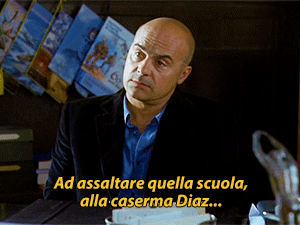
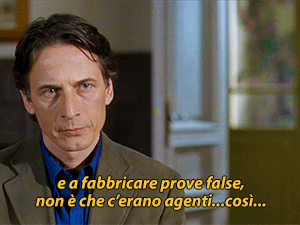
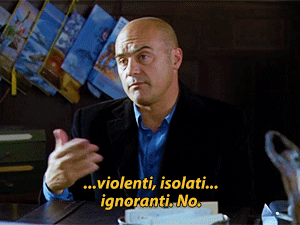

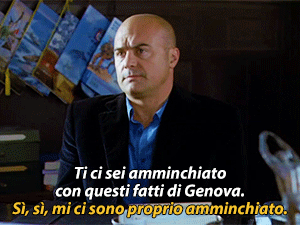

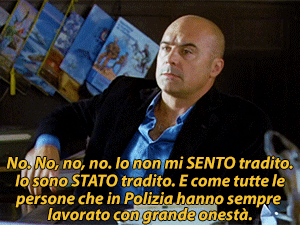

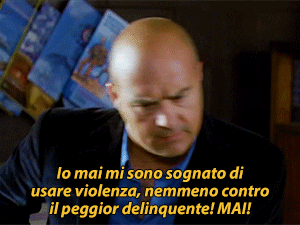

To raid that school, the Diaz barracks*, and to make up fake evidence were not...isolated, vi*lent...rude agents. No. Were the highest ranks of Italian P*lice. / You’re digging your heels in those Genoa facts. / Yes, yes, I’m really digging in them. / I understand you, Salvo. You feel betrayed by the institution you most trusted. / No. No, no, no. I don’t FEEL betrayed. I WAS betrayed. Like all those people in the Police enforcement who has always worked with greatest honesty. / ... / I never dreamt of use vi*lence even with the worst criminal. NEVER! I never dreamt of - oh, MAKE UP FAKE EVIDENCE! OOOH!
IL COMMISSARIO MONTALBANO 5.01 Giro di boa
*actually, “Diaz” was the name of the school, while the barracks was in Bolzaneto.
#il commissario montalbano#italiansedit#italianstream#montalbano 5x01#luca zingaretti#cesare bocci#g8 genoa#diaz school#genoa 2001#g8#luglio 2001#raid on armando diaz#genoa g8#italian stuff#2001 g8#genova 2001
29 notes
·
View notes
Text
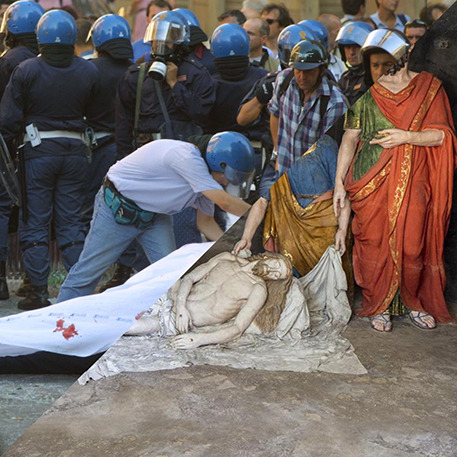
Sean Gallup, Police cover the body of Carlo Giuliani, Genoa, Italy, 20 July 2001
VS
Luigi Marchesi and Pier Celestino Gilardi, Jesus wrapped in the shroud | Chapel 41, Sacro Monte di Varallo, Varallo, Italy, 1826
#sean gallup#g8#genova#genoa#2001#sacro monte di varallo#luigi marchesi#pier celestino gilardi#jesus#varallo#statue#sculpture#collage
135 notes
·
View notes
Text
i've been re-reading morrissey's autobiography for the first time in like 10 years and one of the most hilariously infuriating parts is when he moved to rome in the mid 00s and he talked abt how the city is sooo safe, with very low crime rates and the police are there to actually help and ppl are nice to them.......... you were staying in a hotel in fucking parioli, OF COURSE there's gonna be very little criminal activity and ofc the police are gonna be nice to you, you're literally living in the richest neighbourhood of the city you utter fucking plum lmao
#btw if you think the italian police are so nice & helpful feel free to google the 2001 genoa g8 protests & the stefano cucchi case#also maybe tone down the fetishization of foreign men a bit?? this mf read way too much pasolini#morrissey#the smiths
4 notes
·
View notes
Text
I'm reading Doppelganger by Naomi Klein - it's a great book so far, but a thing left me a bit puzzled. She mentions Italy's current political situation (shitty, literal neofascists in government) and she compares it to the giant, massively supported left-wing protest at the Genoa G8 summit in 2001 – but she doesn't mention how that protest went: it was repressed with extreme police brutality.
A 23 year old was killed by the police, then the night after the protests the police raided a school where students, activists and journalists were staying and attacked them indiscriminately, people ended up in a coma, many were seriously injured, then detained without motives and tortured - and after that the media blamed the victims and the police tried to cover up everything.
It's a big open wound for the italian left, the event had a giant influence and it's considered a watershed moment. And it's so strange to have the G8 protests mentioned without a word about the literal human rights violations that took place there.
#it's a great book though it's just so strange to me to read 'genoa 2001 g8 protests' and it not meaning 'police torture'#cw police violence#klein said the left lost steam after 9/11 but idk#certainly it didn't help but it's not the only thing that happened
0 notes
Text
youtube
A rare video depicting antifa rapper Pavlos Fyssas (murdered by neonazis on a day like today on 18 September 2013) singing a song dedicated to Carlo Giuliani that was murdered by the police on 20 July 2001 (Genoa) and to 15 years old Alexis Grigoropoulos that was murdered by the police on 6 December 2008 (Athens).
The video footage is from 21 June 2011.
We do not forget,
We do not forgive
110 notes
·
View notes
Text

Memorial mural in Lyon, France for Carlo Giuliani, a 23 year-old anarchist who was shot dead by police on July 20, 2001 during the anti-G8 protests in Genoa, Italy
283 notes
·
View notes
Text

A.2.18 Do anarchists support terrorism?
No. This is for three reasons.
Terrorism means either targeting or not worrying about killing innocent people. For anarchy to exist, it must be created by the mass of people. One does not convince people of one’s ideas by blowing them up. Secondly, anarchism is about self-liberation. One cannot blow up a social relationship. Freedom cannot be created by the actions of an elite few destroying rulers on behalf of the majority. Simply put, a “structure based on centuries of history cannot be destroyed with a few kilos of explosives.” [Kropotkin, quoted by Martin A. Millar, Kropotkin, p. 174] For so long as people feel the need for rulers, hierarchy will exist (see section A.2.16 for more on this). As we have stressed earlier, freedom cannot be given, only taken. Lastly, anarchism aims for freedom. Hence Bakunin’s comment that “when one is carrying out a revolution for the liberation of humanity, one should respect the life and liberty of men [and women].” [quoted by K.J. Kenafick, Michael Bakunin and Karl Marx, p. 125] For anarchists, means determine the ends and terrorism by its very nature violates life and liberty of individuals and so cannot be used to create an anarchist society. The history of, say, the Russian Revolution, confirmed Kropotkin’s insight that ”[v]ery sad would be the future revolution if it could only triumph by terror.” [quoted by Millar, Op. Cit., p. 175]
Moreover anarchists are not against individuals but the institutions and social relationships that cause certain individuals to have power over others and abuse (i.e. use) that power. Therefore the anarchist revolution is about destroying structures, not people. As Bakunin pointed out, “we wish not to kill persons, but to abolish status and its perquisites” and anarchism “does not mean the death of the individuals who make up the bourgeoisie, but the death of the bourgeoisie as a political and social entity economically distinct from the working class.” [The Basic Bakunin, p. 71 and p. 70] In other words, “You can’t blow up a social relationship” (to quote the title of an anarchist pamphlet which presents the anarchist case against terrorism).
How is it, then, that anarchism is associated with violence? Partly this is because the state and media insist on referring to terrorists who are not anarchists as anarchists. For example, the German Baader-Meinhoff gang were often called “anarchists” despite their self-proclaimed Marxist-Leninism. Smears, unfortunately, work. Similarly, as Emma Goldman pointed out, “it is a known fact known to almost everyone familiar with the Anarchist movement that a great number of [violent] acts, for which Anarchists had to suffer, either originated with the capitalist press or were instigated, if not directly perpetrated, by the police.” [Red Emma Speaks, p. 262]
An example of this process at work can be seen from the current anti-globalisation movement. In Seattle, for example, the media reported “violence” by protestors (particularly anarchist ones) yet this amounted to a few broken windows. The much greater actual violence of the police against protestors (which, incidentally, started before the breaking of a single window) was not considered worthy of comment. Subsequent media coverage of anti-globalisation demonstrations followed this pattern, firmly connecting anarchism with violence in spite of that the protesters have been the ones to suffer the greatest violence at the hands of the state. As anarchist activist Starhawk notes, “if breaking windows and fighting back when the cops attack is ‘violence,’ then give me a new word, a word a thousand times stronger, to use when the cops are beating non-resisting people into comas.” [Staying on the Streets, p. 130]
Similarly, at the Genoa protests in 2001 the mainstream media presented the protestors as violent even though it was the state who killed one of them and hospitalised many thousands more. The presence of police agent provocateurs in creating the violence was unmentioned by the media. As Starhawk noted afterwards, in Genoa “we encountered a carefully orchestrated political campaign of state terrorism. The campaign included disinformation, the use of infiltrators and provocateurs, collusion with avowed Fascist groups … , the deliberate targeting of non-violent groups for tear gas and beating, endemic police brutality, the torture of prisoners, the political persecution of organisers … They did all those openly, in a way that indicates they had no fear of repercussions and expected political protection from the highest sources.” [Op. Cit., pp. 128–9] This was, unsurprisingly, not reported by the media.
Subsequent protests have seen the media indulge in yet more anti-anarchist hype, inventing stories to present anarchists are hate-filled individuals planning mass violence. For example, in Ireland in 2004 the media reported that anarchists were planning to use poison gas during EU related celebrations in Dublin. Of course, evidence of such a plan was not forthcoming and no such action happened. Neither did the riot the media said anarchists were organising. A similar process of misinformation accompanied the anti-capitalist May Day demonstrations in London and the protests against the Republican National Congress in New York. In spite of being constantly proved wrong after the event, the media always prints the scare stories of anarchist violence (even inventing events at, say Seattle, to justify their articles and to demonise anarchism further). Thus the myth that anarchism equals violence is perpetrated. Needless to say, the same papers that hyped the (non-existent) threat of anarchist violence remained silent on the actual violence of, and repression by, the police against demonstrators which occurred at these events. Neither did they run apologies after their (evidence-less) stories of doom were exposed as the nonsense they were by subsequent events.
This does not mean that Anarchists have not committed acts of violence. They have (as have members of other political and religious movements). The main reason for the association of terrorism with anarchism is because of the “propaganda by the deed” period in the anarchist movement.
This period — roughly from 1880 to 1900 — was marked by a small number of anarchists assassinating members of the ruling class (royalty, politicians and so forth). At its worse, this period saw theatres and shops frequented by members of the bourgeoisie targeted. These acts were termed “propaganda by the deed.” Anarchist support for the tactic was galvanised by the assassination of Tsar Alexander II in 1881 by Russian Populists (this event prompted Johann Most’s famous editorial in Freiheit, entitled “At Last!”, celebrating regicide and the assassination of tyrants). However, there were deeper reasons for anarchist support of this tactic: firstly, in revenge for acts of repression directed towards working class people; and secondly, as a means to encourage people to revolt by showing that their oppressors could be defeated.
Considering these reasons it is no coincidence that propaganda by the deed began in France after the 20 000-plus deaths due to the French state’s brutal suppression of the Paris Commune, in which many anarchists were killed. It is interesting to note that while the anarchist violence in revenge for the Commune is relatively well known, the state’s mass murder of the Communards is relatively unknown. Similarly, it may be known that the Italian Anarchist Gaetano Bresci assassinated King Umberto of Italy in 1900 or that Alexander Berkman tried to kill Carnegie Steel Corporation manager Henry Clay Frick in 1892. What is often unknown is that Umberto’s troops had fired upon and killed protesting peasants or that Frick’s Pinkertons had also murdered locked-out workers at Homestead.
Such downplaying of statist and capitalist violence is hardly surprising. “The State’s behaviour is violence,” points out Max Stirner, “and it calls its violence ‘law’; that of the individual, ‘crime.’” [The Ego and Its Own, p. 197] Little wonder, then, that anarchist violence is condemned but the repression (and often worse violence) that provoked it ignored and forgotten. Anarchists point to the hypocrisy of the accusation that anarchists are “violent” given that such claims come from either supporters of government or the actual governments themselves, governments “which came into being through violence, which maintain themselves in power through violence, and which use violence constantly to keep down rebellion and to bully other nations.” [Howard Zinn, The Zinn Reader, p. 652]
We can get a feel of the hypocrisy surrounding condemnation of anarchist violence by non-anarchists by considering their response to state violence. For example, many capitalist papers and individuals in the 1920s and 1930s celebrated Fascism as well as Mussolini and Hitler. Anarchists, in contrast, fought Fascism to the death and tried to assassinate both Mussolini and Hitler. Obviously supporting murderous dictatorships is not “violence” and “terrorism” but resisting such regimes is! Similarly, non-anarchists can support repressive and authoritarian states, war and the suppression of strikes and unrest by violence (“restoring law and order”) and not be considered “violent.” Anarchists, in contrast, are condemned as “violent” and “terrorist” because a few of them tried to revenge such acts of oppression and state/capitalist violence! Similarly, it seems the height of hypocrisy for someone to denounce the anarchist “violence” which produces a few broken windows in, say, Seattle while supporting the actual violence of the police in imposing the state’s rule or, even worse, supporting the American invasion of Iraq in 2003. If anyone should be considered violent it is the supporter of state and its actions yet people do not see the obvious and “deplore the type of violence that the state deplores, and applaud the violence that the state practises.” [Christie and Meltzer, The Floodgates of Anarchy, p. 132]
It must be noted that the majority of anarchists did not support this tactic. Of those who committed “propaganda by the deed” (sometimes called “attentats”), as Murray Bookchin points out, only a “few … were members of Anarchist groups. The majority … were soloists.” [The Spanish Anarchists, p. 102] Needless to say, the state and media painted all anarchists with the same brush. They still do, usually inaccurately (such as blaming Bakunin for such acts even though he had been dead years before the tactic was even discussed in anarchist circles or by labelling non-anarchist groups anarchists!).
All in all, the “propaganda by the deed” phase of anarchism was a failure, as the vast majority of anarchists soon came to see. Kropotkin can be considered typical. He “never liked the slogan propaganda by deed, and did not use it to describe his own ideas of revolutionary action.” However, in 1879 while still “urg[ing] the importance of collective action” he started “expressing considerable sympathy and interest in attentats” (these “collective forms of action” were seen as acting “at the trade union and communal level”). In 1880 he “became less preoccupied with collective action and this enthusiasm for acts of revolt by individuals and small groups increased.” This did not last and Kropotkin soon attached “progressively less importance to isolated acts of revolt” particularly once “he saw greater opportunities for developing collective action in the new militant trade unionism.” [Caroline Cahm, Kropotkin and the Rise of Revolutionary Anarchism, p. 92, p. 115, p. 129, pp. 129–30, p. 205] By the late 1880s and early 1890s he came to disapprove of such acts of violence. This was partly due to simple revulsion at the worse of the acts (such as the Barcelona Theatre bombing in response to the state murder of anarchists involved in the Jerez uprising of 1892 and Emile Henry’s bombing of a cafe in response to state repression) and partly due to the awareness that it was hindering the anarchist cause.
Kropotkin recognised that the “spate of terrorist acts” of the 1880s had caused “the authorities into taking repressive action against the movement” and were “not in his view consistent with the anarchist ideal and did little or nothing to promote popular revolt.” In addition, he was “anxious about the isolation of the movement from the masses” which “had increased rather than diminished as a result of the preoccupation with” propaganda by deed. He “saw the best possibility for popular revolution in the … development of the new militancy in the labour movement. From now on he focussed his attention increasingly on the importance of revolutionary minorities working among the masses to develop the spirit of revolt.” However, even during the early 1880s when his support for individual acts of revolt (if not for propaganda by the deed) was highest, he saw the need for collective class struggle and, therefore, “Kropotkin always insisted on the importance of the labour movement in the struggles leading up to the revolution.” [Op. Cit., pp. 205–6, p. 208 and p. 280]
Kropotkin was not alone. More and more anarchists came to see “propaganda by the deed” as giving the state an excuse to clamp down on both the anarchist and labour movements. Moreover, it gave the media (and opponents of anarchism) a chance to associate anarchism with mindless violence, thus alienating much of the population from the movement. This false association is renewed at every opportunity, regardless of the facts (for example, even though Individualist Anarchists rejected “propaganda by the deed” totally, they were also smeared by the press as “violent” and “terrorists”).
In addition, as Kropotkin pointed out, the assumption behind propaganda by the deed, i.e. that everyone was waiting for a chance to rebel, was false. In fact, people are products of the system in which they live; hence they accepted most of the myths used to keep that system going. With the failure of propaganda by deed, anarchists turned back to what most of the movement had been doing anyway: encouraging the class struggle and the process of self-liberation. This turn back to the roots of anarchism can be seen from the rise in anarcho-syndicalist unions after 1890 (see section A.5.3). This position flows naturally from anarchist theory, unlike the idea of individual acts of violence:
“to bring about a revolution, and specially the Anarchist revolution[, it] is necessary that the people be conscious of their rights and their strength; it is necessary that they be ready to fight and ready to take the conduct of their affairs into their own hands. It must be the constant preoccupation of the revolutionists, the point towards which all their activity must aim, to bring about this state of mind among the masses … Who expects the emancipation of mankind to come, not from the persistent and harmonious co-operation of all men [and women] of progress, but from the accidental or providential happening of some acts of heroism, is not better advised that one who expected it from the intervention of an ingenious legislator or of a victorious general … our ideas oblige us to put all our hopes in the masses, because we do not believe in the possibility of imposing good by force and we do not want to be commanded … Today, that which … was the logical outcome of our ideas, the condition which our conception of the revolution and reorganisation of society imposes on us … [is] to live among the people and to win them over to our ideas by actively taking part in their struggles and sufferings.” [Errico Malatesta, “The Duties of the Present Hour”, pp. 181–3, Anarchism, Robert Graham (ed.), pp. 180–1]
Despite most anarchists’ tactical disagreement with propaganda by deed, few would consider it to be terrorism or rule out assassination under all circumstances. Bombing a village during a war because there might be an enemy in it is terrorism, whereas assassinating a murdering dictator or head of a repressive state is defence at best and revenge at worst. As anarchists have long pointed out, if by terrorism it is meant “killing innocent people” then the state is the greatest terrorist of them all (as well as having the biggest bombs and other weapons of destruction available on the planet). If the people committing “acts of terror” are really anarchists, they would do everything possible to avoid harming innocent people and never use the statist line that “collateral damage” is regrettable but inevitable. This is why the vast majority of “propaganda by the deed” acts were directed towards individuals of the ruling class, such as Presidents and Royalty, and were the result of previous acts of state and capitalist violence.
So “terrorist” acts have been committed by anarchists. This is a fact. However, it has nothing to do with anarchism as a socio-political theory. As Emma Goldman argued, it was “not Anarchism, as such, but the brutal slaughter of the eleven steel workers [that] was the urge for Alexander Berkman’s act.” [Op. Cit., p. 268] Equally, members of other political and religious groups have also committed such acts. As the Freedom Group of London argued:
“There is a truism that the man [or woman] in the street seems always to forget, when he is abusing the Anarchists, or whatever party happens to be his bete noire for the moment, as the cause of some outrage just perpetrated. This indisputable fact is that homicidal outrages have, from time immemorial, been the reply of goaded and desperate classes, and goaded and desperate individuals, to wrongs from their fellowmen [and women], which they felt to be intolerable. Such acts are the violent recoil from violence, whether aggressive or repressive … their cause lies not in any special conviction, but in the depths of .. . human nature itself. The whole course of history, political and social, is strewn with evidence of this.” [quoted by Emma Goldman, Op. Cit., p. 259]
Terrorism has been used by many other political, social and religious groups and parties. For example, Christians, Marxists, Hindus, Nationalists, Republicans, Moslems, Sikhs, Fascists, Jews and Patriots have all committed acts of terrorism. Few of these movements or ideas have been labelled as “terrorist by nature” or continually associated with violence — which shows anarchism’s threat to the status quo. There is nothing more likely to discredit and marginalise an idea than for malicious and/or ill-informed persons to portray those who believe and practice it as “mad bombers” with no opinions or ideals at all, just an insane urge to destroy.
Of course, the vast majority of Christians and so on have opposed terrorism as morally repugnant and counter-productive. As have the vast majority of anarchists, at all times and places. However, it seems that in our case it is necessary to state our opposition to terrorism time and time again.
So, to summarise — only a small minority of terrorists have ever been anarchists, and only a small minority of anarchists have ever been terrorists. The anarchist movement as a whole has always recognised that social relationships cannot be assassinated or bombed out of existence. Compared to the violence of the state and capitalism, anarchist violence is a drop in the ocean. Unfortunately most people remember the acts of the few anarchists who have committed violence rather than the acts of violence and repression by the state and capital that prompted those acts.
#faq#anarchy faq#revolution#anarchism#daily posts#communism#anti capitalist#anti capitalism#late stage capitalism#organization#grassroots#grass roots#anarchists#libraries#leftism#social issues#economy#economics#climate change#climate crisis#climate#ecology#anarchy works#environmentalism#environment#solarpunk#anti colonialism#mutual aid#cops#police
16 notes
·
View notes
Text
Anarchist Zines and Pamphlets Published in July 2023
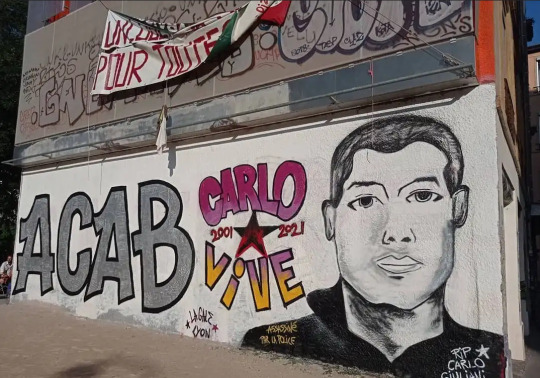
Welcome to our mostly monthly round-up of new zines published in the anarchist space. We aim to highlight a broad range of anarchist thought. Inclusion here doesn't imply endorsement.
You can view past round-ups if you want more reading material. If you have something you want us to include next month, contact us. For a curated collection of zines, view our catalog.
Beyond what you can find here, we also recommend you support anarchist print media. Two recently released print projects include Plastic in Utero: a journal of anti-civ anarchy reborn from the compost of wasteland modernity #1 and Rupture Mag #1
The image accompanying this post is memorial mural in Lyon, France for Carlo Giuliani, a 23 year-old anarchist who was shot dead by police on July 20, 2001 during the anti-G8 protests in Genoa, Italy (source)
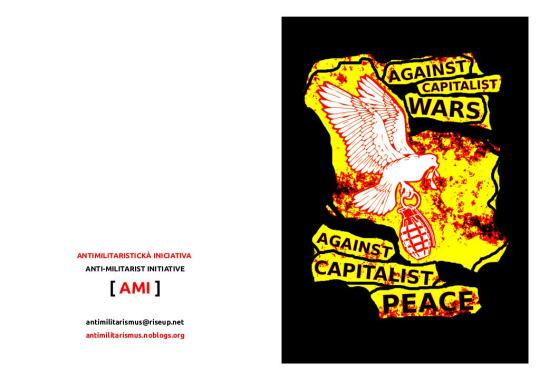
Against Capitalist Wars, Against Capitalist Peace
"In Ukraine, the Czech Republic, the UK, Italy, Syria, France etc… All over the world there is a voice against capitalist wars and also against capitalist peace. Only class war can end this terror and that is what we mean when we say No War but the Class War!
The new pamphlet contains 14 texts by various groups and individuals. The aim is to explain and affirm the meaning of antimilitarism, internationalism and revolutionary defeatism."
Download PDF: [ Imposed | Screen ]

Animal Bodies, Colonial Subjects: (Re)Locating Animality in Decolonial Thought
"Similar to the ways in which Indigenous peoples can undergo a violent process through which we rid our colonial mentalities, I argue that animals can be liberated from their colonized subjecthood through an aided 'process of desubjectification'. That is, thinking through animality as an infrastructure of decolonization re-positions animal bodies as agents of anti-colonial resurgence.They can consequently engender 'forms of energy that are capable of engaging the forces that keep [Indigenous people and animals] tied to [a] colonial mentality and reality'. Settler colonialism has therefore required the normalization of speciesism within Indigenous communities to obfuscate the radicality of Indigenous-animal relations. In that sense, recalling the representation of animals in Indigenous cosmologies/oral traditions and unsettling speciesism as a 'colonial mentality' must be prioritized in decolonial thought..."
Download PDF: [ Imposed ]

Black Flag Vol. 3, No. 2
This issue features a lenghty essay titled "Anarchy in the USA: The International Working People's Association (IWPA)". The IWPA is famous for its association with the Haymarket anarchists. Alongside this, there are several writings published by members including Albert Parsons and Lizzie Swank. It also includes a selection of writings by Marie Goldsmith, Rudolf Rocker, and Max Baginski. Most of the material here covers the historical anarchist space, with the exception of a review of a more recent book.
Download PDF: [ Imposed | Screen ]
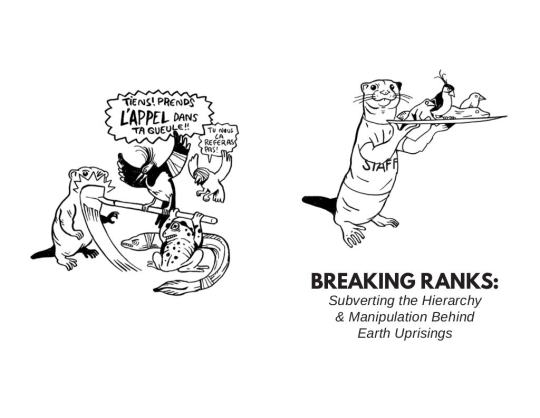
Breaking Ranks: Subverting the Hierarchy and Manipulation Behind Earth Uprisings
This zine contains three critiques from anti-authoritarians in France critical of the Tiqqunists and their actions in post-ZAD struggles. These texts focus on manipulative and vanguardist practices, the spectacularization of the struggle, and the use of radicals as shock-troops. The goal of these texts, and our translation effort, is to increase familiarity with these deceptive practices and strategies, an essential first step towards sabotaging the influence and control of any similar attempts in our own neck of the woods.
Download PDF: [ Imposed | Screen ]
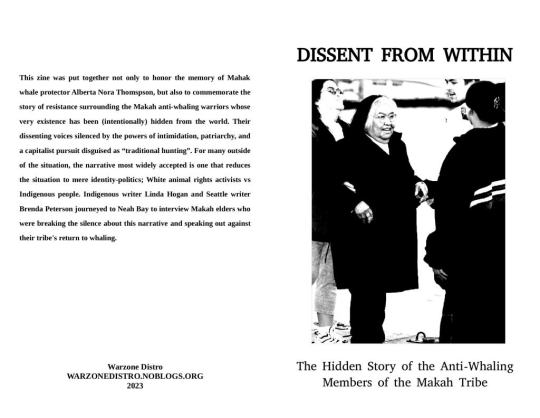
Dissent From Within: The Hidden Story of the Anti-Whaling Members of the Makah Tribe
This zine was put together not only to honor the memory of Mahak whale protector Alberta Nora Thomspson, but also to commemorate the story of resistance surrounding the Makah anti-whaling warriors whose very existence has been (intentionally) hidden from the world. Their dissenting voices silenced by the powers of intimidation, patriarchy, and a capitalist pursuit disguised as "traditional hunting". For many outside of the situation, the narrative most widely accepted is one that reduces the situation to mere identity politics; White animal rights activists vs Indigenous people. Indigenous writer Linda Hogan and Seattle writer Brenda Peterson journeyed to Neah Bay to interview Makah elders who were breaking the silence about this narrative and speaking out against their tribe’s return to whaling.
Download PDF: [ Imposed ]

How to Set Up a Burner Phone
This zine is a step-by-step guide to setting up a burner phone, from purchasing the phone to installing recommended apps -- all without a Google account! If you are interested in using a temporary phone to avoid surveillance or hinder a police investigation, this zine will give you some best practices to consider.
Download PDF: [ Imposed | Screen ]
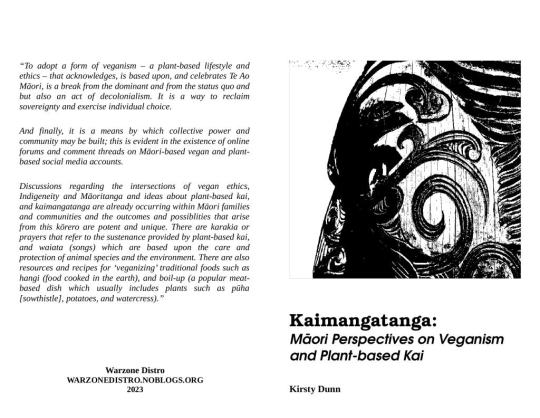
Kaimangatanga: MÄori Perspectives on Veganism and Plant-based Kai
"To adopt a form of veganism -- a plant-based lifestyle and ethics -- that acknowledges, is based upon, and celebrates Te Ao Maori, is a break from the dominant and from the status quo and but also an act of decolonialism. It is a way to reclaim sovereignty and exercise individual choice.
And finally, it is a means by which collective power and community may be built; this is evident in the existence of online forums and comment threads on Maori-based vegan and plant- based social media accounts."
Download PDF: [ Imposed ]

Living in an Earthquake: The Fight Against Cop City Confronts Unprecedented Repression
"In the following account and analysis, participants in the movement in Atlanta trace its trajectory from the fifth Week of Action that began on March 4, 2023 through the City Council vote of June 5.
At first, it appeared to be an ordinary forest defense campaign aimed at discouraging Atlanta city government from pouring money into an unpopular police training facility. But over the past two years, the fight against Cop City has escalated into one of the fiercest struggles of the Biden era, pitting a wide range of courageous people against a united front of politicians, prosecutors, and police.
In setting out to stop the militarization of police, activists have discovered that they are challenging the state on a point that all of its representatives consider non-negotiable. Police and prosecutors have pressed trumped-up domestic terrorism charges against almost every defendant arrested since last December; they have killed one forest defender; they have charged those engaged in legal support for the arrestees."
Download PDF: [ Imposed ]
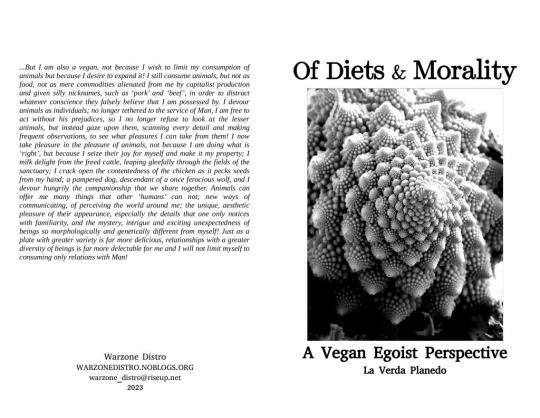
Of Diets and Morality: A Vegan Egoist Perspective
The title summarizes this well. It's a vegan egoist text that argues for seeing animals as having inherent value. A quote:
"Animals can offer me many things that other "humans" can not; new ways of communicating, of perceiving the world around me; the unique, aesthetic pleasure of their appearance, especially the details that one only notices with familiarity, and the mystery, intrigue and exciting unexpectedness of beings so morphologically and genetically different from myself! Just as a plate with greater variety is far more delicious, relationships with a greater diversity of beings is far more delectable for me and I will not limit myself to consuming only relations with Man!"
Download PDF: [ Imposed ]
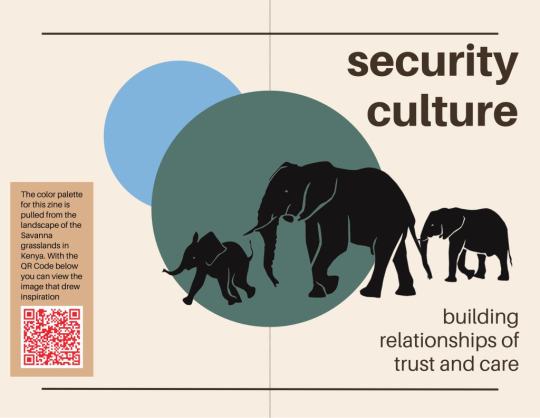
Security Culture: Building Relationships of Trust and Care
These zine provides an accessible introduction to security culture and its place in social movements. Beyond the basics, it explores how security culture can be informed by kinship, an Indigenous value system based on responsibility, vulnerability, trust, and reciprocity. The zine also offers tips and examples on how to apply critical thinking, relationship building, communication, and feedback to security culture. It uses elephants as a motif (complete with illustrations) to reinforce the concepts presented.
Download PDF: [ Imposed | Screen ]
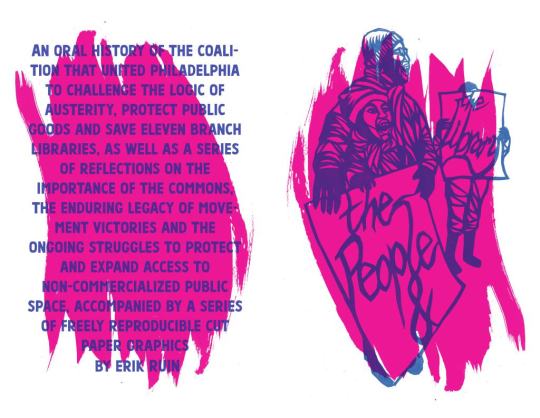
The People and the Library
"An oral history of the coalition that united Philadelphia to challenge the logic of austerity, protect public goods and save eleven branch libraries, as well as a series of reflections on the importance of the commons, the enduring legacy of movement victories and the ongoing struggles to protect and expand access to non-commercialized public space, accompanied by a series of freely reproducible cut paper graphics by Erik Ruin.
Download PDF: [ Imposed | Screen ]

The War in Front of Us: An anonymous, afro-pessimist militant’s challenge to the Stop Cop City movement
"There is a tension stewing right now, not simply between differing tactics but with the outright acceptance of the position we are currently in, that of a social war. The third day-long descent on the Atlanta City Council has again hammered home that legalistic attacks and appeals to the political machine are going to keep failing. Despite that being so overwhelmingly evident, the more progressive-inclined elements of the struggle continue to insist upon a peaceful endurance, one that refuses escalation and actual conflict for their safe, faux-rad- ical abolitionism. We have been locked in this social war since the rebellion and the terrain needs to be read as such."
Download PDF: [ Imposed ]

Veganism and Mi'kmaw Legends
"This text proposes a postcolonial ecofeminist reading of Mi'kmaw legends as the basis for a vegan diet rooted in Indigenous culture. I refer primarily to veganism throughout this work because unlike vegetarianism, it is not only a diet but a lifestyle that, for ethical reasons, eschews the use of animal products. Constructing an Indigenous veganism faces two significant barriers--the first being the association of veganism with whiteness... ...A second barrier to Indigenous veganism is the portrayal of veganism as a product of class privilege."
Download PDF: [ Imposed ]

Veganism as Anti-Colonial-Praxis: A Collection of Indigenous Vegan Perspectives
"Despite the absorption of veganism by the capitalist market – a process that admittingly reinforces pre-existing divisions across class and racial lines -- a vegan lifestyle taken to its logical conclusion is fundamentally anti-capitalist and anti-colonial. By (re)acknowledging sentience and personalities within the bodies of colonized (animal) subjects, a vegan lifestyle rejects authoritarian relationships based on disrespect for the bodily autonomy of those whose lives have been re-purposed for human supremacist consumption."
Download PDF: [ Imposed ]
52 notes
·
View notes
Text




youtube
"Get Rid of Yourself is a video-film-tract addressed to those who anonymously embody the return of political activism within Empire. While its initial sounds and images were filmed during the riots in Genoa, 2001, these materials are pulled apart and recomposed in order to locate the intensity of a shared experience, rather than producing one more documentary version of the programmed and hyper-mediatized confrontation of the G8 counter-summit."
8 notes
·
View notes
Text
Colin Firth
My first unhinged project involved watching all of Colin Firth's IMDB acting credits, to see how often he got wet.
Figured I'd make a master list of the posts I made. I didn't make a post on everything, so if there's one without a link you can always request to hear my thoughts hahaha
I also made a post about his hair choices, because he does a lot of period pieces and oh boy do I often have Thoughts
And here's a post about how his trend of getting wet changed our perception of Darcy forever
1917 (2019)
1919 (1984)
The Accidental Husband (2008)
The Advocate/Hour of the Pig (1993)
And When Did You Last See Your Father (2007)
Another Country (1984)
Apartment Zero (1988)
Arthur Newman (2012)
Before I Go To Sleep (2014)
Blackadder Back and Forth (1999)
Born Equal (2006)
Bridget Jones Diary (2001)
Bridget Jones: Edge of Reason (2004)
Bridget Jones' Baby (2016)
Camille (1984)
Celebration (2007)
A Christmas Carol (2009) Intro, Movie
Circle of Friends (1995)
Command (2018)
Conspiracy (2001)
Crown Court episode (1984)
Deep Blue Sea (1994)
Devil's Knot (2013)
Donovan Quick (2000)
Dorian Gray (2009)
Dutch Girls (1985)
Easy Virtue (2008)
Empire of Light (2022)
The English Patient (1996)
Femme Fatale (1991)
Fever Pitch (1997)
Fourplay/Londinium (2001)
Gambit (2012)
Genius (2016)
Girl With a Pearl Earring (2003)
The Happy Prince (2018)
Hope Springs (2003)
Hostages (1992)
Hour of the Pig/The Advocate (1993)
The Importance of Being Earnest (2002)
The King's Speech (2010)
Kingsman: Secret Service (2014)
Kingsman: Golden Circle (2017)
Last Legion (2007)
Londinium/Fourplay (2001)
Lost Empires (1986) Intro, Pt 1, Pt 2, Pt 3, Pt 4, Pt 5, Pt 6, Pt 7
Love Actually (2003)
Magic in the Moonlight (2014)
Main Street (2010)
Mamma Mia! (2008)
Mamma Mia! Here We Go Again (2018)
Mary Poppins Returns (2018)
Master of the Moor (1994) Pt 1, Pt 2, Pt 3, Pt 3 Finale
The Mercy (2017)
A Month in the Country (1987)
Mothering Sunday (2021)
My Life So Far (1999)
Nanny McPhee (2005)
Nostromo (1996)
Operation Mincemeat (2021)
Out of the Blue (1991)
Pat Hobby Teamed With Genius (1987)
Playmaker (1994)
Pride and Prejudice (1995) (I didn't make a single post, it got a bit away from me so you can find the collection of links on my Pride and Prejudice masterlist)
The Railway Man (2013)
Relative Values (2000)
The Secret Garden (1987)
The Secret Garden (2020)
The Secret Laughter of Women (1999)
Shakespeare in Love (1998)
A Single Man (2009)
St Trinians (2007)
St Trinians 2: The Legend of Fritton's Gold (2009)
The Staircase (2022)
Stars in Shorts (2012)
A Summer in Genoa (2008)
Supernova (2020)
Then She Found Me (2007)
A Thousand Acres (1997)
Tinker Tailor Soldier Spy (2011)
Trauma (2004)
Tumbledown (1988)
Turn of the Screw (1999)
Valmont (1989)
What A Girl Wants (2003)
Where the Truth Lies (2005)
The Widowing of Mrs Holroyd (1995)
Wings of Fame (1990)
3 notes
·
View notes
Text
As tensions over the government’s pension reform continue to run high in France, the country’s security forces are being accused of trampling on basic human rights in their handling of mass demonstrations that have drawn hundreds of thousands of people to the streets on an almost weekly basis.
Watchdogs in France and abroad, including Amnesty International and the Council of Europe, are sounding the alarm about an “excessive use of force” by French riot police during the protests, which began in January and are still ongoing, despite losing some steam after the wildly unpopular bill was signed into law earlier this month. France is the homeland of equality, liberty, and fraternity—but not all of its riot police have read the Declaration of the Rights of Man. In recent decades, French police tactics have grown more heavy-handed than elsewhere in Europe, and that matters, because French law enforcement practices extend well beyond France, which trains the security forces of dozens of countries around the world, both democratic and authoritarian.
Members of the Parisian Observatory of Public Freedoms, who have been monitoring the rallies in the French capital from the ground, painted a bleak picture of unwarranted police charges aimed at “terrorizing” protesters, widespread physical and verbal abuse of demonstrators, and indiscriminate use of weapons such as crowd dispersal grenades and rubber bullets.
There has been “a lot of unjustified tear gassing and bludgeoning,” they said, asking not to be identified by name.
Other European riot police can play hardball, too. Spaniards wreaked havoc with Catalan protesters. Italians beat scores of demonstrators to a pulp at the Genoa G-8 protests in 2001.
But in recent years, French police have been playing in a different league from everyone else. The country has seen multiple waves of tense demonstrations over workers’ rights, as well as months of unrest beginning in 2018 caused by the “yellow vest” movement against taxes and economic inequality. But many argue that the way French police deal with demonstrators is making things worse. The French approach, which entails a gradual increase in the use of force in response to the level of resistance by protesters, is effectively “an escalation doctrine,” said Sebastian Roché, an expert on policing at Sciences Po university in Grenoble.
French police are more heavily armed than their colleagues elsewhere in Europe. The LBDs, or riot guns firing rubber bullets that can cause severe injuries or even death, are hardly ever seen in Britain or Germany, while they are used extensively—and often without warning—in France. Those weapons are a big part of the reason French riot police injure and kill more than anywhere else in Europe, said Roché, with 36 people severely mutilated at demonstrations since 2018 and three killed in the last 10 years.
French police have also come under heavy criticism for surrounding and holding up entire groups of protesters, including peaceful ones, as part of their efforts to restore public order. These “fish traps” often end with scores of detentions, but most are then released within a few hours without any charges—a sign, critics say, that they should have never been taken into custody in the first place. On March 16, some 300 people were detained in Paris alone, but only nine ended up facing judicial proceedings.
This kind of practice “discourages people from participating in the demonstrations,” said Simon Foreman, of France’s National Consultative Commission on Human Rights. “We have forgotten that the police are a public service that is there to protect the exercise of freedoms, which means protecting demonstrators. Instead, in the French version of maintaining public order, the crowds are seen as hostile, almost as enemies,” he said.
Critics say this attitude is encouraged from the top. Last month, Interior Minister Gérald Darmanin warned that “taking part in an unauthorized demonstration is a crime that justifies being detained,” a statement that many have criticized, since it is incorrect. But violence has come from the demonstrators’ ranks, too, with many episodes of vandalism and attacks on the security forces. About 1,000 cops were injured in the second half of March alone, according to the Interior Ministry.
Police say they are using the minimum force required to restore order. “The vast majority of the public does not want people to be allowed to smash everything up with impunity, with the French taxpayer having to foot the bill,” said Johann Cavallero of Alliance Police Nationale, a police union.
But France doesn’t just have a problem with protests. Over the past six years, the country has been condemned five times by the European Court of Human Rights over physical abuses committed in other situations by its police, which tend to be less popular than the European average—and much less trusted than their German, British, and Nordic counterparts.
French cops could be brutal in the past, too. In the early 1960s, officers on the orders of Paris police head Maurice Papon massacred dozens (if not hundreds) of peaceful Algerian demonstrators, throwing many of them into the Seine. However, in the 1980s and 1990s, France went through a period of low-intensity protests and lower-intensity policing. That changed with the 2005 riots in the country’s deprived banlieues, said Roché. The use of the LBDs became commonplace, and at demonstrations police began chasing troublemakers, even in the middle of the crowds and at the risk of exacerbating tensions with other protesters, too.
In other countries, they just don’t do it that way, even when there are riots in major cities or yobos on the loose. In countries like the United Kingdom, Germany, the Netherlands, and Sweden, police give warnings and provide key information to protesters by means of large screens and liaison officers. In Spain, the creation of a mediation department made up of police officers trained in sociology and psychology contributed to a 70 percent decline in the number of incidents at rallies between 2011 and 2014. The spread of a de-escalation culture on the continent was also helped by an EU-funded project that saw 20 organizations from 11 European countries come together in the early 2010s to hammer out new ways to reduce tensions between protesters and the police.
France did not participate.
To be sure, while French security forces are more heavy-handed than many of their Western counterparts, France remains far from a police state. Several days of mobilization against the pension reform saw the participation of more than 1 million protesters, with most rallies unfolding without major incidents. Even when clashes do break out, the crackdown is a far cry from the military-style equipment that is typically deployed on similar occasions in the United States. And the number of casualties among protesters, while high by European standards, pales compared to the death tolls reported on the other side of the Atlantic. Cops in Toulouse don’t have tanks; in Topeka, they kind of do.
Yet, with the confidence of many French people in the democratic process shaken by President Emmanuel Macron’s decision to force through his embattled pension reform without a vote in Parliament, the strong-arm tactics adopted by the security forces are reinforcing the feeling of an authoritarian slide.
With another round of nationwide rallies planned for May 1, tensions in the country’s streets are likely far from over. “Sometimes, demonstrations become a release valve for people’s anger against the state,” said Cavallero, of the police union. “Unfortunately, those who are there representing the state are the police,” he said.
22 notes
·
View notes
Text
Acteur britannique de théâtre, de cinéma et de télévision

Il est né à Greyshott, Hampshire, Angleterre.
Le père de Colin a enseigné l'histoire au King Alfred's College de Winchester. La mère est professeur universitaire de religion. Colin a passé sa petite enfance au Nigeria, où ses grands-parents étaient des missionnaires méthodistes, retournant en Angleterre à l'âge de cinq ans.
A joué dans des films tels que "The English Patient" (1996), "Shakespeare in Love" (1998), "Blue Blood" (2000), "Bridget Jones's Diary" (2001), "What a Girl Wants" (2003), "La fille de la boucle d'oreille en perles" (2003), "Real Love" (2003), "Where the Truth Lies" (2005), "The Last Legion" (2007), "Mamma Mia" (2008), "Genoa" ( 2008), "Easy Behavior" (2008), "Dorian Gray" (2009), "A Lonely Man" (2009) et bien d'autres.
Pour son rôle dans A Single Man, le premier film de Tom Ford, Colin Firth a remporté le prix du meilleur acteur à la Mostra de Venise et le prix BAFTA du meilleur acteur, et a été nominé pour un Oscar.
Le 13 janvier 2011, une étoile portant son nom a été dévoilée sur le Hollywood Walk of Fame et le 16 janvier, Firth a remporté le Golden Globe Award du meilleur acteur dans un drame pour son rôle dans The King Speaks ! (2010), en outre, ce rôle a valu à l'acteur sa deuxième nomination aux Oscars.
Firth écrit de la fiction et a récemment publié sa première histoire, The Department of Nothing.
#cinéma#unfilmcouleur#film#comportementhumaines#actionshumaines#joie#plaisir#aventures#lesdessinsanimés#buxberg
2 notes
·
View notes
Text
0 notes
Text
Diaz - Don't Clean Up This Blood
On July 19–21, 2001, over 200,000 people took to the streets of Genoa to protest against the ongoing G8 summit. Anti-globalization activists clashed with the police, with 23-year-old protester Carlo Giuliani shot dead after confronting a police vehicle. In the aftermath, the police organized a night raid on the Diaz high school, where around a hundred people between unarmed protesters—mostly…
0 notes
Text

Julien Terzics - Julien Brigada - is dead.
An anti-fascist for 20 years, at the dawn of the 21st century. Red Warrior, skinhunter, militant and CNT secretary, drummer of Brigada Flores Magon.
Thoughts for his sons, his loved ones.
Photo: Genoa, 2001.
#Julien Terzics#Julien Brigada#rest in power#cnt#161#1312#antifa#solidarity#anti donald trump#anti joe biden#anti capitalism#antinazi#anti colonialism#anti cop#anti colonization#eat the rich#eat the fucking rich#antifascist#antifascismo#antifaschistische aktion#antifaschismus#anarchism#anarchist#ausgov#politas#auspol#tasgov#taspol#australia#fuck neoliberals
1 note
·
View note